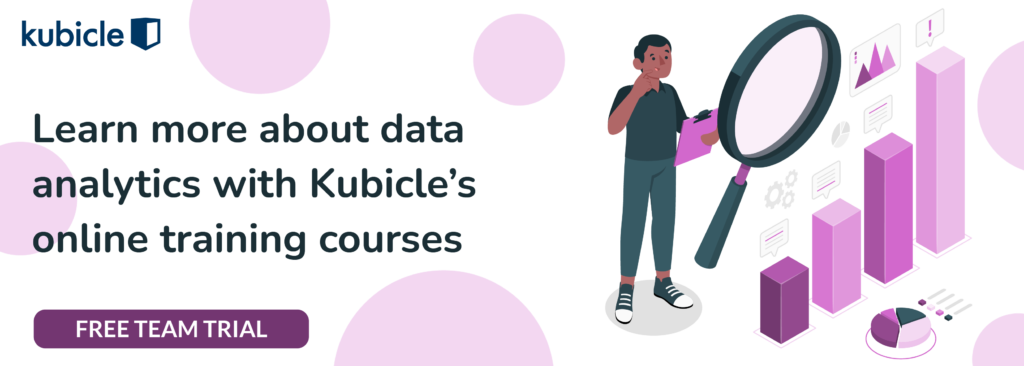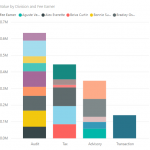Nowadays, we’re all probably desensitized to being spied on. Social networks store enormous amounts of data on us, generating light and heat online but nothing more. State sponsored surveillance, in the guise of “security” elicits little more than a shrug these days. Perhaps it’s down to the relative anonymity, the fact that we’re part of a big faceless mob to them.
Despite this, the notion of our employers knowing everything we do provokes a much stronger reaction in most of us. Employers already gather plenty of data on employees, possibly including clock-in and clock-out times, or time-sheets of how long they spend on particular projects. Yet, this is relatively modest stuff. The notion, for example, of an employer recording key logs or screen activity on work computers is probably enough to make most of you readers feel wary or uneasy (Are you really supposed to be reading this right now?).
Such is the difficulty of working in Human Resources analytics. Analytics is coming to be a part of every aspect of modern business, and HR is no exception. Modern advances like Artificial Intelligence have the potential to cause even more disruption to the area. Properly implemented, analytics can do a lot for HR, from selecting the best employees to hire, to identifying the best performers who deserve rewards.
Done wrongly, you risk invading employees privacy, reinforcing biases and prejudices you didn’t know existed, or even getting in a lot of trouble with the law. We’ll learn about the positive and negative things analytics can do for your business.
The Good
Analytics, and in particular Artificial Intelligence, have the ability to revolutionize HR and improve the operations of your whole company. Generally speaking, these tools should be able to improve your company’s efficiency and productivity. This can deliver benefits for both the employer and employee.
For example, consider the time and effort involved in hiring people. In particular, consider the process of reducing a large number of applicants to a shortlist of credible candidates. Using CVs or resumes runs a strong risk of missing out on important information, but organising multiple rounds of screening interviews can take up precious time and money.
Nowadays, several companies are turning to AI to improve this process. As an example, HireVue is a company that can analyse video interviews and analyse facial recognition and voice recognition to identify the best candidates. Used by companies like IBM, this software allows them to screen large numbers of candidates without spending the amount of time they would otherwise spend on in-person interviews.
Analytics can also deliver benefits to employees as well. For example, most large companies will have some sort of performance evaluation system for their employees. Traditionally, these evaluations would be based on subjective evaluations of employees by managers. If data is being recorded on what employees are doing at work, then these evaluations can be made much more objective, by using data to evaluate employees.
Judging employees on the basis of clear numerical criteria removes many issues of ambiguity that can result from other systems. It removes the need for employees to schmooze their managers to get the evaluation they want. It removes the ability for managers’ biases – subtle or otherwise – to influence the evaluation process. If rewards, such as bonuses or promotions, are linked to performance, then an analytics based system makes it clear that those rewards go to those who actually earn it, instead of those who are the managers equivalent of the “teachers pet”.

The Bad
While HR analytics can have benefits for both company and employee, there are several issues which hinder its widespread implementation.
The biggest hurdle that employers need to overcome is skepticism. As we mentioned in the introduction, most employees instinctively dislike any notion that their employee is watching their every move, waiting for them to slip into unproductivity (Really, you’re still reading this instead of working?).
When Facebook or someone else collects data on us, we probably understand that they do it because that’s their business model. We are the product that they are selling. We might not like it, but their logic is clear. By contrast, when an employer collects data on us, it’s hard not to feel like it’s borne out of distrust, or a suspicion that we might do something wrong. For HR analytics to work, employers need to overcome this distrust, and convince employees that gathering data on what they do is beneficial to both parties. We’ll discuss how you might do this later on.
Perhaps a more serious issue is that if HR analytics is intrusive or controlling, then it can reinforce existing inequalities in the working world. Specifically, employees who hold power over their employer will gain the power to resist intrusion, while employees who don’t have this power will have little option but to go along with it.
As an example of this, consider Amazon. In January, the company was granted a patent for a wristband that could be worn by workers fulfilling orders in the company’s warehouses. The wristbands would track the exact location of its wearer’s hands, and vibrate to guide them to the right items. It’s worth pointing out that Amazon have not actually manufactured the wristbands yet, but it gives us an insight into how they think
Clearly, this could help make order fulfillment more efficient, but it comes at a heavy cost to the privacy of workers. However, these workers would have little power to resist the change, as if they do, the company will quickly replace them with another person, or better yet, a robot.
Now Jeff Bezos didn’t give me an interview for this article (mostly because I didn’t ask him for one), but I would be surprised if he or any of his top level executives would wear such a device in their own jobs. More likely, they would view it as an excessive invasion of their privacy. Clearly, the downsides of analytics can fall unequally throughout the workforce.
The Ugly
As well as the negative consequences mentioned above, badly managed HR analytics can have unintended consequences that can seriously impact on your business.
Analytics, and artificial intelligence in particular, is notoriously prone to bias. If it’s not told that certain findings are undesirable, then it can create problems you would never have even thought of.
As an example, AI can now analyse phone calls and determine the mood of the speaker. Let’s imagine a professional services firm uses technology like this to monitor client calls. We’ll assume they also integrate this into their employee data. You could imagine that such a system might find that employees who live further from work might sound slightly more tired on early-morning phone calls.
Over time, the AI may notice this as a pattern, and start advising the other AI system in charge of screening new applicants that applicants living further away are not as good. It’s safe to say that professional services firms are usually located in wealthy areas of most cities, so suddenly, the AI recruitment is now discriminating against people from less well-off areas. AI doesn’t know that this might be undesirable unless it’s told so. As you can see, AI requires very careful monitoring to avoid reflecting unconscious biases.
Another potential problem of analytics is the invasion of employees privacy. This can be a particular problem if your company or your employees are based in Europe. If this is the case, employee data is now subject to the General Data Protection Regulation, or GDPR. This is a stringent set of new rules brought in by the European Union which grants people sweeping rights over their personal data. People tend to think of it as something which mainly impacts big tech companies, but it actually affects any employer collecting any personal data about their employees.
There are numerous provisions of GDPR that are of interest to businesses. For example, employees must specifically consent to their data being collected. Employers must be able to justify their collection of personal data, and must only use it for the purpose they obtained consent for. Possibly most interestingly, an employee leaving a company can request a copy of all their personal data be sent to their new employer, so you need to make sure you don’t collect any personal information that you wouldn’t want a competitor to see. Breaking any of these laws can result in heavy fines, so it’s clear that an analytics operation that oversteps the mark can land a company in a lot of trouble.
If your company and employees are both outside the EU, then GDPR may not apply. The US in particular has much weaker laws, granting employers much more sweeping rights to collect data on employees. Nonetheless, in the current privacy climate, employers need to consider the reputational damage of being seen to be invading employees privacy. While a monolith like Facebook may be able to shrug off bad publicity, other companies may not be so lucky.
How you can get it right
As with any area of business, analytics has the potential to transform HR, but it needs to be treated with care in order to get it working properly for you. Because HR analyses people, not things, the consequences of messing up are greater than in any other area of the business.
The most important thing you’ll need to make analytics work for you is expertise. As we saw, artificial intelligence has a particular habit of turning up unwanted bias if you don’t handle it with care. Experts in the area will understand these pitfalls and know how to prevent them. If you’re implementing any sort of advanced analytics in your company, then you should either hire or train experts in the field first. Avoid just buying products off the shelf without really understanding how they work.
Secondly, show your employees that you respect their privacy. Even if you’re not based in the EU, consider applying the principles behind GDPR anyway. If you’re a global company, you’ll need to apply them to anyone based in Europe, so you may as well apply them worldwide. Given the current consternation about privacy, it’s likely that the principles will spread globally over time, although admittedly they may take a while to reach the US.
Another point we haven’t mentioned yet is to anonymise data where possible. If analysing a whole body of employees, there’s no need to identify individuals. Only do that where you really need to, like in one-on-one performance reviews. This can help reduce your employees fear of being spied on by removing any threat of them being somehow exposed in front of their colleagues.
Conclusion
HR is the most difficult area of a company to apply analytics to, because you are analyzing real people instead of just numbers on a screen. This requires you to take particular care when applying analytics. Used properly, you can use HR analytics and AI to hire the best people and retain them for as long as possible. However, you also need to balance that against the legitimate privacy concerns of both individuals and legal authorities.
Ultimately, HR analytics can deliver value for a business, but it’s not as simple as turning on some sort of AI lightbulb. It requires effort and expertise to set up these tools so that they work the way you want them to, and frequent monitoring afterwards to make sure it’s not doing something wrong. In many ways, it’s actually like hiring an employee, but using a different skill set to that of traditional HR. Truly, analytics will deliver you the employees of the future.








